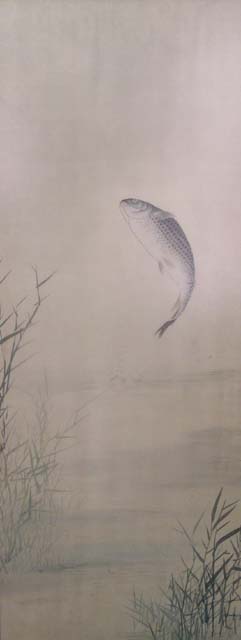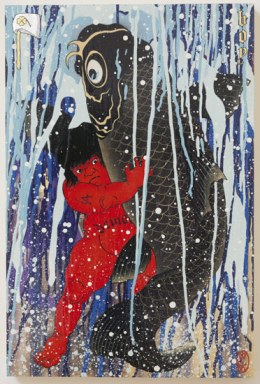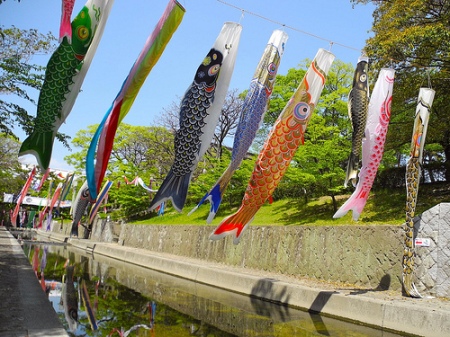Children’s Day in Japan is celebrated every year on May 5. Previously known as Tango no Sekku and celebrating male children (the celebration for girls was May 3, called Hinamatsuri), the holiday was changed to celebrate all children and renamed Komodo no Hi in 1948, though the traditions associated with the former Boy’s Day remain. Before Japan switched to the Gregorian calendar that same year, Tango no Sekku was celebrated on the fifth day of the fifth lunar month, usually right around the summer solstice. This lunar date is also celebrated in other Asian cultures, notably Dragon Boat Festival (duanwu) in China, Taiwan and Hong Kong, the Tet Festival in Vietnam and the Dano Festival in Korea, but with very different origins and customs. The fifth lunar month is also traditionally celebrated as a month of purification, and this holiday adds to that spirit as families wish for their children to grow up strong and successful.

Carp, Japan, Meiji period (1868-1912 AD), Ink on silk, Gift of Dr. and Mrs. Donald F. Lomas, 1982.145.1
One of the most common sights on Children’s Day is rooted in its origins as Boy’s Day: the koinobori, or carp windsock, as seen at top. Families will display one for each family member: black for the father, red for the mother, and others (usually green or blue) for each child. The carp has long been a symbol for strength and fortitude– the fish is so strong and powerful that it swims upstream. Traditionally, families hoped for the same qualities in their sons. The carp windsocks blowing in the wind are meant to recall them swimming strongly through the waters. The symbol of the carp is also often seen in classical Japanese painting, as seen in this Meiji-era work from the Pacific Asia Museum collection.
Another common symbol of strength is the Kintaro figure, who we’ve written about before. Kintaro embodies both boyish youth and enormous strength, and has popularly been represented wrestling with or riding on a giant carp.

Gajin Fujita (b.1972), Golden Boy After Kuniyoshi 2011, Gold leaf, platinum leaf, and silver leaf with spray paint and paint markers on wood panel, 24 x 16 in. (50.8 x 40.6 cm.), Collection of Jim Kenyon, Image courtesy of L.A. Louver, Venice, CA, © Gajin Fujita
Here at Pacific Asia Museum, we like to celebrate children too! On Sunday, May 12 from 12-4 p.m., we’re holding a Free Family Festival inspired by the exhibition The Garden in Asia. This Mother’s Day afternoon of crafts, performances and more is a great (free!) way to spend time with the family. You’ll even have a chance to make a koinobori for yourself! See the full schedule of events here. ~CM




 Posted by USC PAM
Posted by USC PAM 

